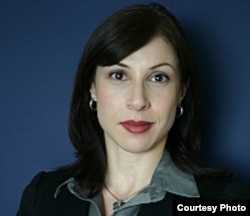WASHINGTON, D.C. —
For 12 years Mahmoud Abd al-Aziz al-Mujahid, an alleged former bodyguard of Osama bin Laden, has been held as a detainee at Guantanamo Bay, Cuba. The Yemeni native was among the original 20 “worst of the worst” enemy combatants to arrive at Guantanamo’s Camp X-Ray in January 2002. Last week, after years of investigations, he was cleared for transfer to Yemen by the Pentagon. But like 56 other Yemenis slated for transfer, he is unlikely to return home until Yemen can show he is no longer a threat.
In a major speech last May, President Obama pledged to “lift the moratorium” on Yemeni transfers and announced the appointment of new senior envoys charged with making those transfers happen. Since then, the U.S. has transferred 11 detainees --Algerians, Saudis, Sudanese and Uighurs, but none to Yemen.
Yemeni transfers halted for four years
Washington stopped transferring Yemenis from Guantanamo to authorities in Yemen in 2010, after learning that the so-called “underwear bomber” who attempted to blow up a Northwest Airlines flight in December 2009 had been trained by al-Qaida-linked militants in Yemen. Since then, the fear among many officials is that in the lawless political climate of Yemen, repatriated Yemeni’s could pose a terrorist threat.
A September 2013 national intelligence report on the “reengagement” of former Guantanamo prisoners shows that out of a total of 603 detainees released, 100 or 16-percent have returned to terrorist or insurgent activities and another 74 or 12-percent are believed to have done so.
As a former chief prosecutor at Guantanamo’s Office of Military Commissions for terrorism trials Morris Davis told VOA nearly a year ago, recidivism is inevitable.
“If you sent the cleared detainees home, somebody in that group is going to do something stupid at some point in the future, and the president hasn’t been willing to have his name on that happening,” Davis said.
No capacity in Yemen to deal with returnees
Nabeel Khoury, a senior fellow of Middle East and national security at The Chicago Council on Global Affairs. He previously served as the U.S. deputy chief of mission in Yemen from 2004 to 2007. Khoury says Yemen does not have the capacity to deal with returning detainees.
“At the time when I was there, there were two things that we were discussing with the Yemenis,” Khoury said. “One was something that they wanted--a modern prison system. The other thing was some kind of rehab program along the lines of the one the Saudis have.”
About nine years ago, Saudi Arabia introduced the concept of ‘soft rehabilitation,’ based on the principle that terrorism can’t be defeated by force, but by incentive and religious reorientation. Saudi rehabilitation centers have been panned by some as being too soft – in at least one center, prisoners have access to an Olympic-size swimming pool, a sauna, a gym and television. But, as program director Said al-Bishi told AFP last May, "In order to fight terrorism, we must give them an intellectual and psychological balance... through dialogue and persuasion.”
And, as Carnegie Endowment’s Christopher Boucek has noted, Saudi Arabia’s rehabilitation programs have had positive and “intriguing” results, with recidivist and re-arrest rates of only one to two percent.
Funding issues
“The problem is money—and the people to staff it,” said Khoury. “Do the Yemenis have enough people with the kinds of skills you need to work with rehabilitating people who have been engaged in war and violence?”
Yemen has asked the US for $20 million to cover the cost of building such a facility which some observers say would be a bargain compared with the $800,000 per year the US spends keeping each detainee in Cuba.
Andrea Prasow, senior national security counsel and advocate in Human Rights Watch's U.S. Program, was part of a HRW group that that recently traveled to Yemen’s capital, Sana’a, to discuss the situation with Foreign Minister Abu Bakr al-Qirbi
“Mr.al-Qirbi explained that in his view, a rehabilitation facility must be one that is truly designed to help the returning men recover and reintegrate into Yemeni society,” Prasow said.
“But security requirements should not be an obstacle to their transfer. These 56 men have never been charged with a crime and, like the others in Guantanamo, have been held in violation of international law for years,” she added.
In a major speech last May, President Obama pledged to “lift the moratorium” on Yemeni transfers and announced the appointment of new senior envoys charged with making those transfers happen. Since then, the U.S. has transferred 11 detainees --Algerians, Saudis, Sudanese and Uighurs, but none to Yemen.
Yemeni transfers halted for four years
Washington stopped transferring Yemenis from Guantanamo to authorities in Yemen in 2010, after learning that the so-called “underwear bomber” who attempted to blow up a Northwest Airlines flight in December 2009 had been trained by al-Qaida-linked militants in Yemen. Since then, the fear among many officials is that in the lawless political climate of Yemen, repatriated Yemeni’s could pose a terrorist threat.
A September 2013 national intelligence report on the “reengagement” of former Guantanamo prisoners shows that out of a total of 603 detainees released, 100 or 16-percent have returned to terrorist or insurgent activities and another 74 or 12-percent are believed to have done so.
As a former chief prosecutor at Guantanamo’s Office of Military Commissions for terrorism trials Morris Davis told VOA nearly a year ago, recidivism is inevitable.
“If you sent the cleared detainees home, somebody in that group is going to do something stupid at some point in the future, and the president hasn’t been willing to have his name on that happening,” Davis said.
No capacity in Yemen to deal with returnees
Nabeel Khoury, a senior fellow of Middle East and national security at The Chicago Council on Global Affairs. He previously served as the U.S. deputy chief of mission in Yemen from 2004 to 2007. Khoury says Yemen does not have the capacity to deal with returning detainees.
“At the time when I was there, there were two things that we were discussing with the Yemenis,” Khoury said. “One was something that they wanted--a modern prison system. The other thing was some kind of rehab program along the lines of the one the Saudis have.”
About nine years ago, Saudi Arabia introduced the concept of ‘soft rehabilitation,’ based on the principle that terrorism can’t be defeated by force, but by incentive and religious reorientation. Saudi rehabilitation centers have been panned by some as being too soft – in at least one center, prisoners have access to an Olympic-size swimming pool, a sauna, a gym and television. But, as program director Said al-Bishi told AFP last May, "In order to fight terrorism, we must give them an intellectual and psychological balance... through dialogue and persuasion.”
And, as Carnegie Endowment’s Christopher Boucek has noted, Saudi Arabia’s rehabilitation programs have had positive and “intriguing” results, with recidivist and re-arrest rates of only one to two percent.
Funding issues
“The problem is money—and the people to staff it,” said Khoury. “Do the Yemenis have enough people with the kinds of skills you need to work with rehabilitating people who have been engaged in war and violence?”
Yemen has asked the US for $20 million to cover the cost of building such a facility which some observers say would be a bargain compared with the $800,000 per year the US spends keeping each detainee in Cuba.
Andrea Prasow, senior national security counsel and advocate in Human Rights Watch's U.S. Program, was part of a HRW group that that recently traveled to Yemen’s capital, Sana’a, to discuss the situation with Foreign Minister Abu Bakr al-Qirbi
“Mr.al-Qirbi explained that in his view, a rehabilitation facility must be one that is truly designed to help the returning men recover and reintegrate into Yemeni society,” Prasow said.
“But security requirements should not be an obstacle to their transfer. These 56 men have never been charged with a crime and, like the others in Guantanamo, have been held in violation of international law for years,” she added.










